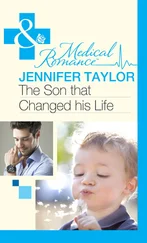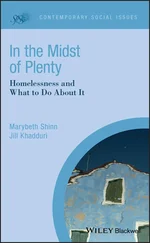Jennifer Worth - In the Midst of Life
Здесь есть возможность читать онлайн «Jennifer Worth - In the Midst of Life» весь текст электронной книги совершенно бесплатно (целиком полную версию без сокращений). В некоторых случаях можно слушать аудио, скачать через торрент в формате fb2 и присутствует краткое содержание. Жанр: Биографии и Мемуары, на английском языке. Описание произведения, (предисловие) а так же отзывы посетителей доступны на портале библиотеки ЛибКат.
- Название:In the Midst of Life
- Автор:
- Жанр:
- Год:неизвестен
- ISBN:нет данных
- Рейтинг книги:3 / 5. Голосов: 1
-
Избранное:Добавить в избранное
- Отзывы:
-
Ваша оценка:
- 60
- 1
- 2
- 3
- 4
- 5
In the Midst of Life: краткое содержание, описание и аннотация
Предлагаем к чтению аннотацию, описание, краткое содержание или предисловие (зависит от того, что написал сам автор книги «In the Midst of Life»). Если вы не нашли необходимую информацию о книге — напишите в комментариях, мы постараемся отыскать её.
In the Midst of Life — читать онлайн бесплатно полную книгу (весь текст) целиком
Ниже представлен текст книги, разбитый по страницам. Система сохранения места последней прочитанной страницы, позволяет с удобством читать онлайн бесплатно книгу «In the Midst of Life», без необходимости каждый раз заново искать на чём Вы остановились. Поставьте закладку, и сможете в любой момент перейти на страницу, на которой закончили чтение.
Интервал:
Закладка:
A discussion about the benefits or futility of resuscitation can be difficult for someone if they have not considered the matter beforehand, particularly in the case of a newly diagnosed acute illness with limited treatment or with a grave prognosis. On the other hand, most people will want to talk, learn about and discuss their illness, especially when they are anxious or frightened. Talking about the prognosis should be a natural part of the discussion, although doctors often do not raise the subject of death if patients do not ask, and patients can be too uncertain or too frightened to ask. In my experience most people prefer quality of life to longevity but occasionally people will want to keep going for a specific reason even if they are very unwell, such as a family event like the wedding of a son or daughter, the birth of a grandchild, or the completion of an important project.
Questions about resuscitation are not usually a simple yes or no decision. For example, most people who are not in an advanced terminal illness would want to be resuscitated from a simple cardiac rhythm disturbance or from transient difficulty in breathing due to infection, but often would not want prolonged intensive care with supportive treatment on an artificial ventilator or on kidney dialysis. Thus, any clinical discussion of resuscitation should include what types of resuscitation might be undertaken, and how far-reaching these directives might be. If the conclusion is that the person does not want to be resuscitated from their current illness, then this wish must be respected, and a note or statement made in their medical records to this effect. This statement should be as precise as possible, for example: ‘this person does not wish to be resuscitated from a cardio-respiratory arrest’. When patients have decided that they do not wish to be resuscitated, almost all hospitals have specific ‘Do Not Attempt Resuscitation’ (DNAR) forms for completion by an experienced doctor. There is a model DNAR form, as well as a model patient information leaflet, available on the Resuscitation Council website. [18] The Resuscitation Council. http://www.resus.org.uk/pages/DNARrstd.htm
Most hospitals also have a resuscitation committee, which will agree local policies on the application of Do Not Attempt Resuscitation decisions, and audit the appropriateness of these orders.
It can take a considerable amount of time for doctors to explain resuscitation issues to patients, and for clinicians to understand the wishes of the patient - such discussions are usually sensitive, exploratory and wide-ranging, and often require several conversations. Modern hospital practice usually involves shift work, and often there are several different doctors looking after each patient. It is essential that the clinical team makes time to discuss resuscitation decisions with each patient, and that there is a consistent response from each clinician.
Almost every hospital has introduced Do Not Attempt Resuscitation policies, procedures and forms, and clinical staff have become better at discussing death and resuscitation with patients. For those involved in hospice care and palliative care teams, however, the management of death goes well beyond the issue of whether to resuscitate or not. An alternative, more positive way of thinking about death in people with advanced disease is labelled Allow a Natural Death’ (AND). [19] Allowing a Natural Death: http://allowingnaturaldeath.org/
Allowing a natural death simply means not interfering with the dying process whilst providing care that will keep the patient as comfortable as possible. Allow a Natural Death orders are intended for terminally ill patients who are being cared for in hospices, care homes or at home, but there is no reason why these should not be applied to patients in acute hospital wards as well. The NHS Gold Standards Framework enables generic care providers, such as primary care, care homes, and palliative care settings to deliver a gold standard of care for all people nearing the end of their life, [20] The NHS National Gold Standards Framework Centre. http://www.goldstandards framework.nhs.uk/
and there is an ‘Allow a Natural Death’ form on their website. [21] The NHS Gold Standards Framework. http://www.goldstandardsframework. nhs.uk/
The Avon, Somerset and Wiltshire Cancer Services also have an ‘Allow a Natural Death’ form on their website. [22] Avon, Somerset and Wiltshire Cancer Services Allow a Natural Death (do not attempt resuscitation) Order. http://www.aswcs.nhs.uk/
Dignity in Dying is an organisation dedicated to ensuring choice about where to die, who is present during death and treatment options, and provides access to expert information, good quality end-of-life care, support for loved ones and carers, together with advice on symptoms, and pain relief [23] 22 Avon, Somerset and Wiltshire Cancer Services Allow a Natural Death (do not attempt resuscitation) Order. http://www.aswcs.nhs.uk/
A decision to ‘Allow a Natural Death’ should be communicated in writing by professional clinicians to the local Ambulance or Emergency Services dispatch control centre to avoid resuscitation if that person should unexpectedly collapse. However, at present there are no national arrangements or systematic ways of communicating DNAR orders across all potential healthcare settings. We already use national NHS consent and DNAR forms in our hospitals, so it should not be difficult to extend this and register such forms with the emergency services; Advanced Directives or “Living Wills” could also be included. Of course, a DNAR form or Advanced Directive would need to satisfy the various legal requirements of a written document: it must be signed by the patient and a witness, the patient must have demonstrated adequate mental capacity to make the decision at the time, and the order or directive would have to be applicable to their current illness or condition. Safeguards against fraudulent entries and the influence of overzealous relatives would be necessary - for example, the witness and co-signatory might be a person who knows the patient in a professional capacity, such as their GP, solicitor, priest or minister. Arrangements could be made for patients to reregister or renew these documents annually. Obviously, legal and confidentiality safeguards would also be required with regard to the sharing of the information contained in these forms across different emergency services and healthcare organisations. Such forms could be stored electronically and shared online so that when an emergency call is received about a patient with a DNAR order or Advanced Directive, this would immediately be flagged up and the contents notified to the emergency controller.
Clinical staff are not obliged to offer resuscitation to every patient; doctors do not have to offer or provide treatments that are futile. If a patient has an advanced terminal illness with no realistic chance of improvement, doctors do not have to undertake resuscitation in the event of a cardio-respiratory arrest; it would be considered unethical. However, sometimes a patient or their family cannot accept that unavoidable death may be close, and insist that ‘everything must be done’. Where there is a persistent discrepancy between the views of the patient or their family and the clinical staff, it is good medical practice to seek additional opinions and advice from experienced doctors not directly involved in the case.
The General Medical Council in The United Kingdom has published guidance on ‘Treatment and care towards the end of life: Good practice in decision making’. [24] Treatment and care towards the end of life: Good practice in decision making. http://www.gmc-uk.org/End_of_life.pdf_32486688.pdf
This guidance is based on long-established ethical principles, which include a doctor’s obligation to show respect for human life; to protect the health of patients; to treat patients with respect; and to make the care of their patient their first concern. Patients who are approaching the end of their life need high-quality treatment and care to help them to live as well as possible until they die, and to die with dignity. The guidance identifies a number of challenges in ensuring that patients receive such care, and provides a framework to support doctors in addressing the issues in a way that will meet the needs of individual patients. It emphasises the importance of communication between clinicians and healthcare teams when patients move between different care settings (hospital, ambulance, care home), and during any out-of-hours period. Failure to communicate relevant information can lead to inappropriate treatment being given or failure to meet the patient’s needs.
Интервал:
Закладка:
Похожие книги на «In the Midst of Life»
Представляем Вашему вниманию похожие книги на «In the Midst of Life» списком для выбора. Мы отобрали схожую по названию и смыслу литературу в надежде предоставить читателям больше вариантов отыскать новые, интересные, ещё непрочитанные произведения.
Обсуждение, отзывы о книге «In the Midst of Life» и просто собственные мнения читателей. Оставьте ваши комментарии, напишите, что Вы думаете о произведении, его смысле или главных героях. Укажите что конкретно понравилось, а что нет, и почему Вы так считаете.












